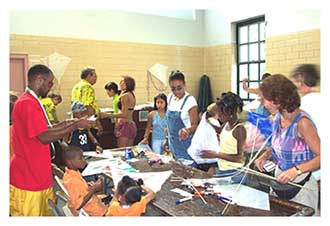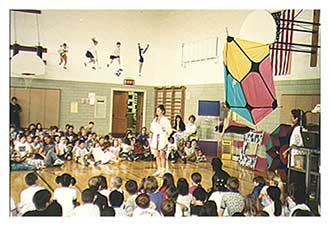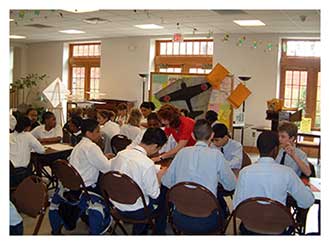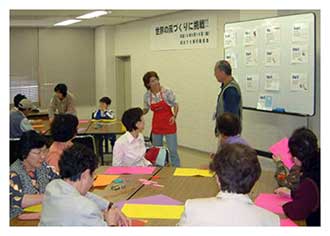Education
Kites have been an integral part of education since they were developed many thousands of years ago. In the earliest days of civilization when islanders in the South Pacific used kites to fish and journey from island to island, they were cognizant of the fact that they had to pass on particular life skills by repeated demonstrations to the younger villagers. This was the early stages of education.
As the world advanced kites were used to learn about weather, aerodynamics, as well as assist in a host of other endeavors; military use, religious ceremonies, and scientific experiments like the ones performed by Benjamin Franklin proving lightning is a bolt of electricity and not anger from the gods.
Education was formerly a matter of reading material in a book, memorizing it, and regurgitating it back out on a test. Today’s teachers know that different children learn in different ways and today’s teachers are more interested in hands-on, inter-active learning. Aeolus Curricula uses kites to educate children in a wide variety of subjects; Alexander Graham Bell’s tetrahedral kite is perfect for 5th grade geometry, Lawrence Hargrave’s Box Kite fits beautifully for the Earth Science section in 7th grade, and Homan Walsh and his kite contest demonstrate an exciting way to teach State History.
The team that makes up Aeolus Curricula has been specializing in using kites as a unique, exciting, and interesting learning tool for the past 25 years. There is no subject matter, or grade level that the experts at Aeolus Curricula cannot create a lesson plan for using kites. From Pre-K students learning to fine tune their motor skills through making and flying kites, through to University level students studying Botany to learn which leaves works best as fishing kites, the best suited bamboo for framing, or that banana fibers work as flying line.
After a long week of rigid orientation, the freshmen students entering The University at Buffalo School of Engineering end their first week with a demonstration of indoor kite flying, and are then placed in groups of four, given a paper bag of building materials, and instructed to make a kite that flies.



